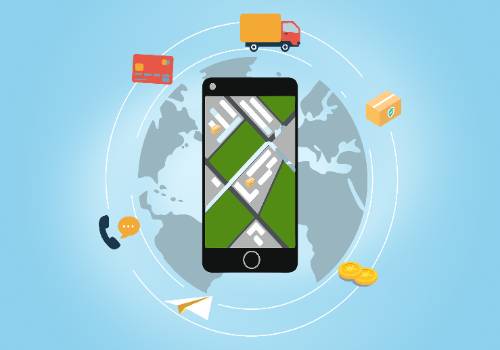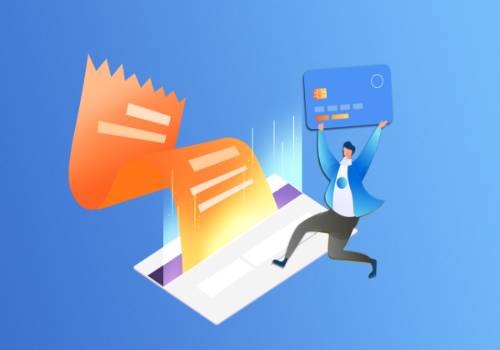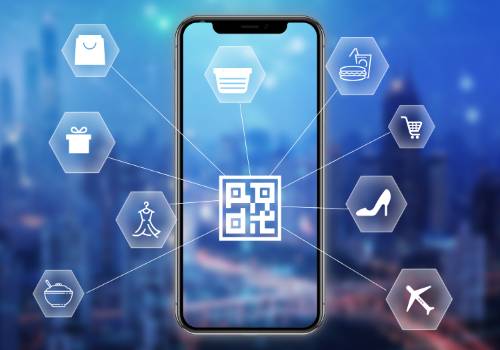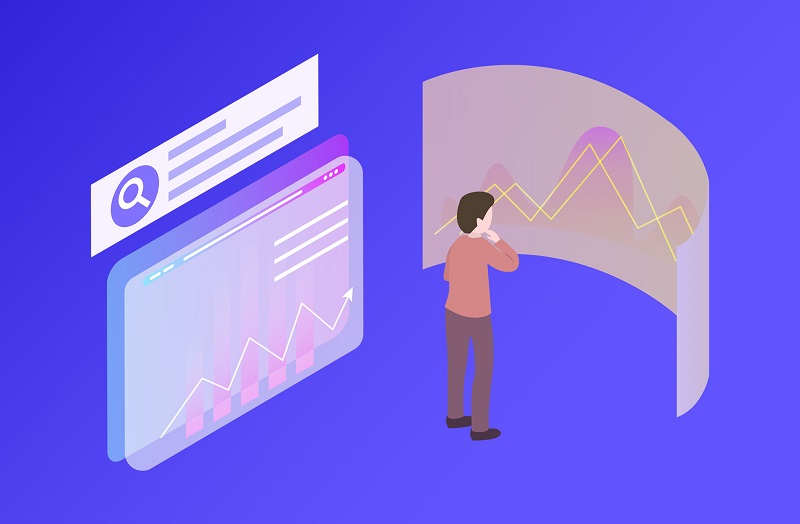Aozhe CEO: What Issues Does Low-Code Actually Solve?
BEIJING, August 22 (TiPost) - When the wave of big models and AIGC swept the world a few months ago, everyone thought that low-code was hanging by a thread: even Python code can begenerated by AI, so who needs low-code?
Shenzhen Aozhe Network Technology Co., Ltd. (Aozhe) has always been labeled as a "low-code native vendor." Over the past thirteen years, they have served over two hundred thousand enterprises and organizations by providing low-code products and corresponding solutions, including 60% of China"s top 500 companies and many industry-leading enterprises. As early as 2017, one of its low-code products had received seed funding. In early 2019, it became China’s first company to publicly announce the completion of Series B financing with its positioning as a low-code company. To date, it remains the only low-code native vendor in China to have completed a Series C financing. According to a recent report released by IDC, Aozhe has been the overall market leader in the low-code platform market for two consecutive years in China, as well as the public cloud market leader for three consecutive years in the country.
Under the impact of this wave of big models, Aozhe inevitably faces external doubts and internal debates. As its founder and CEO, Xu Pingjun soon shifted the focus of this discussion to the core of the enterprise service field - what problems does low-code actually solve?
 (资料图片仅供参考)
(资料图片仅供参考)
"Because of the rapid development of AI, we must consider why low-code can still exist. Fundamentally, low-code solves three problems: efficiency, barriers, and patterns," Xu said.
Essentially, in the digital system, coding is not just a technical ability, but also implies a kind of power - the power to set rules. It is because of the existence of technical barriers and the intertwining of power games that companies have been struggling to effectively combine business and technology as they move from informatization to digitalization.
The emergence of low-code technology has made it possible to solve this long-standing problem. Low-code technology greatly reduces the technical threshold, allowing business personnel to directly participate in the digitalization process. They do not need to go through the cumbersome process of "demand proposal, project initiation, development process, acceptance testing" by the technical team. Instead, they can quickly solve digital innovation challenges in business scenarios on their own. This transformation not only unleashes the strong innovation potential within the enterprise, but also brings forth numerous innovative application scenarios that Xu himself never anticipated. For example, a large enterprise achieved integration through low-code and IM tools, effectively managing a large number of outsourcing supplier projects. The system can distribute and oversee tasks on time, eliminating the trouble of on-site inspections.
Through low-code, more and more large enterprises have reconnected the data of old systems and directly incorporated the rich business experience of many old employees into digital systems, thereby preserving the value of historical assets and human resources. This is also a new value point discovered after low-code has been deeply applied in many enterprises.
After clarifying this layer of business scenario, Xu became more and more at ease, because understanding the business is key to the survival of low-code, which cannot be replaced by large-scale models. Therefore, Xu proposed his own answer: the future will still be the era of "low-code + AI," and not "AI + low-code."
“People’s general concept was "Internet + industry" at the beginning, but with the development of digital economy, it gradually evolved into "industry + Internet" because the Internet has become an industrial infrastructure to some extent. AI will also follow this trend and will definitely become a basic configuration in the future. Therefore, it should be viewed as "low-code + AI" and exploration should be made on how the two can be integrated. If the definition is "AI + low-code," it implies that AI will disrupt the low-code industry. The current AIGC is based on probabilistic models and does not yet understand real business like low-code, which has actually done business modeling. The essence of low-code is model-driven and deterministic. Therefore, AI and low-code are not disruptive to each other; on the contrary, combining them produces better results,” said Xu.
Recently, Xu and TiPost’s co-founder Liu Xiangming had in-depth discussions on the essence of low code, its capabilities, future development, and its relationship with the digital economy and large-scale models. The following is a transcript of the conversation, with some omissions.
Key Takeaways:
1. The real purpose of low-code is to promote digitization and it is the core engine of enterprise digitization. Its application not only accelerates the pace of digital transformation but also makes this transformation more inclusive, allowing more companies to benefit from digitization in a simpler and more direct way.
2. Low-code is the core engine of enterprise digitization. It runs on new infrastructure, allowing for faster integration of new technologies and the fusion of existing digital systems, enabling the agile construction of various business applications in different scenarios.
3. If low-code is only seen as a development tool, even the best low-code products cannot help companies develop best practices.
4. Low code solves three problems: efficiency, barriers, and models.
5. Efficiency and barriers are crucial for any industry. They are not just about costs but also about possibilities. Lower efficiency and lower barriers will inevitably create new models.
6. Unlike low-code, which has actually modeled the business, the current AIGC based on probability models does not truly understand real business. The essence of low-code is model-driven and deterministic. Therefore, AI and low-code are not disruptive but actually complement each other.
7. Large enterprises once thought that "low-code is just a toy." However, they have now realized the business value of it and further promoted its comprehensive application. Nowadays, the value of low-code has been fully recognized and realized.
Current Status of Low-code Applications
Liu: How do you currently see the relationship between low-code and the digital economy?
Xu:In fact, we realized very early on that the real purpose of low-code is to promote digitization and it is the core engine of enterprise digitization. Its application not only accelerates the pace of digital transformation but also makes this transformation more inclusive, allowing more companies to benefit from digitization in a simpler and more direct way.
Take small and medium-sized enterprises as an example. Although online video communication and collaborative office work have become the norm, true digital transformation is still far away. Low-code can help companies with digital awareness and a certain level of technical expertise to achieve digital transformation at a relatively low cost and technical threshold.
As for large and medium-sized enterprises, there are obvious differences in digitalization level. Some companies only use low-code to meet basic workflow approval needs, while companies with better digitalization level want to reconstruct and upgrade business systems based on new technological architectures and business concepts. For companies with advanced awareness and level, we assist them in building a unified development platform, business middle platform, and all-staff digitalization (digital employees).
Low-code provides services to accelerate the digitalization process for enterprises in terms of processes, business, and all-staff digitalization. Most enterprises do not have interfaces or capabilities to start with large-scale digital transformation projects such as "middle platform" construction.
In the government affairs field, low-code is used to implement many processes in large projects. For example, the Aozhe low-code is involved in projects such as Yichang City"s Smart City Brain, Baoding City"s "Ten Thousand People Helping Ten Thousand Enterprises," and the "One Network" governance projects of cities/counties.
Overall, in the entire ToC, ToB, and ToG digital economy chain, low-code will play a significant role. I also believe that it is the engine in this field, and Aozhe will drive and accelerate digitalization in an open and inclusive manner with all parties involved.
Liu: Recently, we are about to hold the Digital Value Annual Meeting. In the past, when talking about digitalization, we thought about the technical level. The biggest difference in this meeting is that we will discuss specific scenarios. Now, it seems that digitalization combined with business is the true digital economy. Previously, it was the IT department that was in charge of digitalization, but now the focus is on how the entire enterprise becomes a digital enterprise.
Xu:Yes, when we introduce it, we often use a diagram to show how low-code serves as the core engine: low-code is in the middle; on the left are new infrastructure for new construction, such as cloud computing and 5G; on the right are new technologies, such as AI; below are the enterprise"s existing construction systems; above are various scenarios, such as upstream and downstream scenarios, internal scenarios, core business scenarios, etc.
The key point is that low-code is the core engine of enterprise digitization. It runs on the new infrastructure, enabling faster integration of new technologies and the fusion of existing digital systems. The aim is to achieve various new scenarios and agilely build various business applications.
At the same time, the engine of low-code has different implementation methods for different groups of people. Aozhe’s low-code products are also divided into two categories: one is for professional developers, which is not only limited to technical personnel, but is also suitable for roles such as product managers and demand analysts; the other is for the vast majority of developers - every member of the enterprise. Low-code is essentially user-centric, allowing all members of the enterprise to participate and collectively drive the digital transformation of the enterprise and rapidly build scenarios.
Liu: When it comes to digitalization of all members, there is a popular term called "digital employee" now. What do you think the future evolution relationship will be like?
Xu:In the companies I have observed, the definition between the two is not very clear. Many times, when companies mention "digital employees," it actually means adding tools like RPA and virtual assistants to automate some tasks, similar to Copilot. It can replace employees to complete some work. On the other hand, "digitalization of all members" emphasizes the participation of each individual in digitalization, which means that everyone can participate in and contribute to the digitalization process. As the digitalization of an enterprise usually extends from the department level to the individual level, each employee can participate in the digitalization of their own positions, and digitalization can also drive certain positions, ultimately resulting in a fully digitally-driven position.
Thus, these two things do not necessarily need to be treated separately. To truly achieve digitalization of all members, Copilot may be used as assistance, but in the end, they may be the same thing. The ideal situation is that the enterprise can combine these two concepts, promote each other, and jointly promote the digital transformation of the enterprise.
Liu: Although it is called "low" code, there is still a certain threshold. In the entire deployment, promotion, and implementation process, where do you think its application threshold lies?
Xu: The core issue is not the technical threshold, but the problem of cognition and usage.The core is still the customer"s understanding of low-code applications. In order to effectively utilize low-code, customers need to have correct understanding and expectations.
For example, there are three misconceptions now. The first thinking is that "low-code is omnipotent." Customers actually do not know where the boundaries of low-code are. They will encounter problems when they start using it and it will be painful if they use it in the wrong place. The second mistaken thinking is that low-code is just some "scraps", and can only be used to build simple systems. This misconception underestimates the value of low-code, and this kind of understanding may lead to customers not fully utilizing the capabilities of low-code, so they may feel a big gap between the price and their expectations. The final wrong thinking is that low-code is a development tool and is only evaluated by developers. If these three cognitive misconceptions are not changed, the full value of low-code products will be difficult to tap into, and as a result, promotion and application will face great difficulties.
In fact, although low-code appears to be a technology-oriented tool, its greatest value lies in the integration of technology and business, and we can better leverage its potential by considering it as a business-driven tool.Once the product manager and business analyst have clarified the functional boundaries of low-code, they can determine which business processes are suitable for using low-code, and then work closely with the development team to promote implementation together.
Although low-code appears to be a tool that is more technically oriented, it should be the best combination of technology and business. Using it as a business-driven tool is the best approach. After product managers and business analysts understand the boundaries of low-code, they can more clearly plan which tasks in the enterprise business need to be completed using low-code, and then work closely with the development team to promote implementation together.
We can also see from our customer base that the understanding of low-code has been greatly improved in recent years. The strongest evidence is that manylarge enterpriseshave shifted from the initial perception that "low-code is a toy" to realising the business value of low-code, and further promoting its comprehensive application. Nowadays, thevalue of low-codehas been fully recognized and realized.
Take a Yunnan construction company that we have served as an example. Initially, they only used low-code to build simple internal processes such as seal and vehicle management systems. However, they quickly discovered the enormous potential of low-code in fields such as on-site construction management, and expanded its application to more core business areas, establishing an on-site construction management platform. After achieving significant results on the platform, this system began to be replicated and promoted among the 300 subsidiary companies under the provincial group.
How to Achieve the Best Practices of Low-code
Liu:Looking at the best customers you have encountered in low-code applications, what characteristics do they have?
Xu:These customers generally have two main characteristics. First, they firmly embrace digitalization, which is the basic requirement. Second, they have a learning-oriented team. In small and medium-sized enterprises, this is often reflected in employees in various positions and business domain experts who have a deep understanding of business processes and requirements. In large enterprises, the prominent characteristics are a strong awareness of digitalization, clear digitalization planning, and strong organizational learning capabilities, with low-code being prioritized as a key project.
Liu:Are there any specific requirements for customers" original IT infrastructure?
Xu:Let"s talk about it separately. For small and medium-sized enterprises, there are generally no specific requirements. Our cloud products targeting small and medium-sized enterprises offer two versions: a standard version and a professional version. The main difference lies in the development aspect. Around 80% of customers usually purchase the standard version, which is ready to use upon installation. The supporting learning materials are also more comprehensive, and customers only need to have a good understanding of the company"s business.
For medium and large enterprises, we provide different products and services based on their specific needs, similar to the distinction between the standard and professional versions. For common requirements, the key is to deeply understand the business needs. This is important because if one acts hastily without sufficient understanding of one’s own business, it may lead to frequent modifications and rework in the later stages. For some advanced requirements, such as building a unified development platform, it is necessary to clearly define the overall digitalization plan for the next 3-5 years from the beginning, considering performance, data, security, technology architecture selection, underlying platforms, and identity management.
Liu:Low-code unleashes the capabilities of many frontline employees and enables their industry knowledge to be directly and quickly integrated into the system. Will it have an impact on enterprise"s top-level architectural design and the consulting industry in the future? After all, coding is also a form of power.
Xu:We have also discussed internally whether we should provide consulting services to our clients. The final conclusion is that we will not. We categorize consulting into business consulting and IT consulting.
For business consulting, the most valuable aspect is the ability to facilitate business transformation and optimization. Even with a great low-code tool, it cannot help a company quickly achieve the best practices in their business if they are not familiar with the business or their current practices are not optimal.However, we can collaborate with consulting firms because implementation is often a painful process, and using low-code can simplify the implementation.
As for IT consulting, it involves a more comprehensive planning of the entire system based on the company"s business. Many companies often only do partial planning in terms of their business and lack a holistic perspective. Having a more macroscopic approach and considering all systems more comprehensively would be more valuable. However, low-code also has its limitations, and not all systems in a company can be implemented using low-code. Some specialized parts can be integrated. I believe that there will be more binding between IT consulting and low-code in the future.
Overall, if a company has strong implementation capabilities, combining business consulting with low-code and better collaboration with the digital department will lead to better implementation of consulting outcomes. As for IT consulting, low-code now provides new opportunities. Some planning can be directly accomplished through low-code, but there won"t be significant changes to the basic consulting model.
Liu:We have discussed the boundaries of low-code a few times. What do you think are the scenarios where low-code excels and where it cannot be used?
Xu:To be frank, the boundaries of low-code are also expanding. Today, we see that the majority of low-code applications start with internal enterprise management. In the general scenarios where low-code excels, the first one is Leads to Cash (LTC), such as CRM customer management, project management, inventory management, etc. The second one is Issue to Resolved (ITR), which includes post-sales service management, dispatch management, etc.
Indeed, with the development of technology and the diversity of business needs, the application scope and boundaries of low-code are continuously expanding. In the future, low-code may have deeper exploration in the combination of B2B and B2C, including integration with various warning systems and applications related to the Internet of Things.
In the long run, I don"t think the boundaries of low-code are absolute. Low-code is a flexible platform, and as long as business personnel are familiar enough with enterprise operations, they can innovate and develop many solutions based on the low-code platform. Therefore, we often learn about various "strange" applications from customer feedback. It feels like this application should not have been implemented with low-code, but in reality, it has been done quite well, and such examples are not uncommon.
For example, in terms of deep applications, I used to strongly oppose the use of low-code to develop ERP systems. However, unexpectedly, one of our partners successfully used our low-code platform to develop a SaaS product for the manufacturing industry"s ERP. It not only includes finance, inventory management, and production, but also features such as MRP, scheduling, and multi-level BOM, which we consider to be particularly complex. The emergence of such deep applications indeed surprised me.
There are also some applications that are not very complicated, but change traditional business logic. Take a client of ours in Kashi, Xinjiang, who specializes in hospital equipment maintenance, as an example. The traditional process is that when a hospital equipment malfunctions, they will search on Baidu and contact a maintenance company. The maintenance company will then bring some simple auxiliary materials based on the hospital"s description and make at least two trips to complete the repair. This client"s solution is to attach a QR code to each piece of equipment, effectively serving as equipment management. Hospital staff only need to scan the code to view the equipment maintenance record file and directly submit a repair request. What"s even more ingenious is that the client has implemented a "grab order" function similar to a ride-hailing platform. This solves several problems: firstly, Xinjiang has a vast territory, so by refining the hospital"s maintenance needs, the system can automatically match nearby maintenance technicians; secondly, by establishing a maintenance record, the equipment problems can be more accurately diagnosed, and one trip is often enough to solve the issue; thirdly, hospitals no longer need to search for maintenance companies online, they can directly request repairs by scanning the code, which not only stabilizes the customer base but also changes the traditional customer acquisition model through search engines. The end result is that this client"s revenue growth is very fast.
Low-code can also be used to solve individual work tasks. For example, a financial enterprise that we serve used to rely on manual methods for collecting and generating reports on all post-investment company data. Now, through low-code integration with RPA, the required information is automatically retrieved and synchronized into several core forms created by low-code. This completes data consolidation, and the system will automatically generate various reports and send them to relevant personnel. This change not only frees up more than 90% of the time for the person in this position but also allows them to retrieve historical records.
Low-code combined with AIwill increase efficiency and make businesses use it better. The accelerated development of AI technology is a huge promotion for low-code.
Liu: The core issue that low-code solves is actually an information gap. The original information systems were tightly coupled, and the information gap flowed within the prescribed paths. The major pipelines were connected, but the capillaries were not, so many places were blocked, which made everyone uncomfortable. But now with loose coupling, many systems have been decoupled, and AI and strong business systems are used to solve the hard-core issues, while low-code builds its own capillaries and connects the meridians.
Including the issue of managing suppliers that was just mentioned, business people are the ones who are most aware of the information gap. Low-code helps them solve this problem of connectivity. If we further develop, it may be about how to bridge the gap of these tiny information differences.
Xu:Yes, the essence of digitization is to eliminate information gaps. Low-code is accelerating this process today.
Liu: After the deep application of low-code, what innovative scenarios have emerged?
Xu:Now, many customers have clear demands for value preservation and value appreciation.Especially in the past two years, everyone wants to achieve domestic substitution and innovation in information technology. Apart from that, many old systems cannot find suppliers to maintain them, but they still need to continue using them. What should be done? Especially for larger state-owned enterprises, they often have hundreds of systems. Through low-code, systems can bring new vitality and achieve value preservation and appreciation of old systems. This is also a point that we and state-owned enterprise customers agree on during communication.
In addition to value preservation and appreciation of old systems, state-owned enterprise customers also have a clear demand for bridging different systems using low-code.Some enterprises with obvious industry characteristics, such as software suppliers in the petrochemical industry, understand the business well but lack new technologies. On the other hand, there are numerous suppliers of new technologies such as big data, but they do not understand the petrochemical industry. Some petrochemical enterprises want their previous cooperative suppliers to develop systems on the low-code platform, so as to achieve the best combination of business and technology. Now, they also use this approach to build new systems, establish a unified development platform, and bring in outsourcing companies.
Another scenario is the preservation and appreciation of human resources, which cannot be experienced in the early stages of cooperation. Only after the construction is completed, the sense of happiness will gradually emerge. For example, after one of our securities clients built the platform, a senior employee who is approaching 50 and is already in a relatively relaxed position suddenly discovered that he can realize many ideas that were previously impossible through the platform, and felt that he was particularly valuable. In the end, because of his years of business knowledge and experience, he entered the COE (Center of Expertise) expert center of the company and also provided business guidance to other departments.
Liu: Asset preservation and appreciation are benefits, but for individuals, low-code is like a tool that can really help a person find their true mission and help them realize their ideas, providing them with more choices and possibilities.
Xu:Yes, we have many customers who are doing innovations that we never thought of. For example, Nanning Rail Transit held a low-code competition internally, and hundreds of applications within the company were built by employees themselves, covering everything from party building to canteen management. There is also a dairy company that used low-code to create a traceability system for milk stations, basically replacing the original ERP.
But it"s not just companies that can achieve these things. Ordinary individuals can also do it—Peng Long, a teacher in Sichuan Province, used low-code to build a series of applications, realizing comprehensive digital management of the school and winning many awards.
Liu: Previously, everyone looked at many problems from a technical perspective, so they couldn"t see the business problems. Low-code actually empowers the front line, liberating all these scenarios at once. Will this process pose challenges to enterprise management, organizational structure, and culture?
Xu:What we are doing now is full-scale digitization, involving all business departments. It’s not like the traditional way of issuing notifications and administrative requirements in the past, but more like the operation mode of Internet SaaS.
At the organizational level, there are generally three levels. Above each department, a semi-virtual organization COE expert center is established. It is led by the IT department and supported by some early internal seed users. It can provide online answers or offline guidance for problems encountered in various department applications. The last level is the IT department, which provides support for some problems that are really difficult to solve, such as system integration requirements. Overall, there is not much organizational challenge because low-code development is an incremental system that does not affect the operation and management of the original team.
In terms of culture, for some state-owned enterprises, some operational promotion skills are still needed, so that everyone realizes that digitalization is something that every position should participate in.
Liu: There will definitely be a large number of "garbage low-code" applications in this innovation process, just like information overload becomes application overload. How to manage and eliminate them?
Xu:It is indeed easy to encounter such problems. This situation occurred in the past two years. After we sold the product to customers, they did it themselves. The anticipation was good, but the result was a mess.
Now, our low-code platform itself is also layered. As an enterprise-level or department-level application, we recommend allocating permissions properly and having a dedicated team to maintain and do top-level design and planning. We have a complete methodology, from blueprint design to system implementation, it is a co-creation mode, doing blueprint design with customers. Digital systems are not results, but processes that need to be continuously done.
In addition, the COE expert center of the enterprise will also have some judgment and management, but currently they don"t need to pay too much attention to department-level garbage applications. It is common for many departments to build an application, and it is encouraged as long as the department plans well and can meet their management needs.
At the data level, we will have some integration at the bottom layer and manage authorization well.
The Future of Low-Code
Liu: What are the challenges for the following development of low-code technology? Which direction will the research and development go?
Xu:First and foremost, the most important thing is how to integrate with AI, which is also the current focus of Aozhe"s research and development.
The second thing is the boundaries of low-code. Currently, the fastest-growing areas are the integration of ToB and ToC, as well as the integration with the Internet of Things. ToC applications are an extension from the internal to the external, but there are still challenges for low-code in terms of user experience, internal and external organizational relationships, data rights, performance requirements, and stable online capabilities. We need to further study how to do better in these aspects. The integration with the Internet of Things is about making front-end applications more agile through it. Building applications is not a problem now, but we need to make the applications more targeted.
Thirdly, modeling in the low-code platform for large enterprises is something we are actively promoting now. It is about how to truly empower business personnel to drive complex systems. Currently, the entire industry is just getting started, and business personnel can now directly build simple single low-code applications. This layer of problem has been basically solved. However, complex systems start with good modeling and design, and then express the flow. IT personnel can only understand about 80% of the business, which is a huge efficiency loss and will also restrict the innovation of business personnel. Therefore, the current challenge is to enable business personnel to drive the entire complex system, and let IT personnel transition from a leading position to a supporting position.
Liu: You mentioned that the future is "low-code + AI", not "AI + low-code". What is the logic behind this?
Xu: People’s general concept was "Internet + industry" at the beginning, but with the development of digital economy, it gradually evolved into "industry + Internet" because the Internet has become an industrial infrastructure to some extent. AI will also follow this trend and will definitely become a basic configuration in the future. Therefore, it should be viewed as "low-code + AI" and exploration should be made on how the two can be integrated. If the definition is "AI + low-code," it implies that AI will disrupt the low-code industry. The current AIGC is based on probabilistic models and does not yet understand real business like low-code, which has actually done business modeling. The essence of low-code is model-driven and deterministic. Therefore, AI and low-code are not disruptive to each other; on the contrary, combining them produces better results.
标签:
为您推荐
精彩推送
- 暗黑3 官方 暗黑3代理
- 德国调谐器Startech公司为TeslaModel3汽车改造
- 董明珠:不招只想要多少工资的员工!回应格力落榜500强:总比爆雷好
- 资本市场迎一揽子政策措施 释放诸多信号
- 环球影业为“超级任天堂世界”投放 3D 视频广告
- 今年我国三伏天气温如何?出伏后气温如何发展?专家分析→
- iPhone 15或将迎重大升级!安卓用户和苹果用户可互借充电器了?
- 可用Siri控制车辆:特斯拉App迎来重要更新
- 天津终于出伏啦!不过……
- 让圣诞节更智能SmartSide壁板带来最佳礼物
- 拒绝降薪,加盟湖人!如愿联手偶像詹姆斯,你是绝佳的争冠拼图
- 平安险客服电话是多少号码_平安险
- 机构:加拿大成低龄留学家庭青睐目的地之一
- 星巴克中国创新科技中心落户深圳
- 2023年曲靖市第五届轮滑运动公开赛“轮动冰感”轮滑巡回赛暨云南第二届“滇盟联赛”曲靖站开赛
- 女篮头牌被澳籍主帅打压 韩旭坐板凳席全程外套没脱 赛后一脸苦笑
- 沧海月明珠有泪蓝田日暖玉生烟运用了什么典故 沧海月明珠有泪蓝田日暖玉生烟的意思
- 东部战区位台岛周边组织海空联合战备警巡和联合演训
- 谢谢你,医生!
- 沙漠王子越剧赵志刚(越剧赵志刚)
- 亚洲日本55页 亚洲日本5566
- 福特招聘前苹果高管 Peter Stern,出任新综合服务部主管
- 164个药品通过医保目录初步审查,两款CAR-T疗法和两款“减肥神药”均在其中
- 初秋稻飘香
- 江西安义:建设幸福河湖 留住美丽乡愁
- 中国空间站收获阶段性应用成果
- 恒大被爆在美申请破产保护!许家印所图为何?律师解读
- 辽宁省2024年硕士研究生考试下半年备考时间表
- 有头发、牙齿!玉林一女子腹内竟长出“怪胎”
- 澳媒:澳大利亚用这策略吸引中国游客


















































